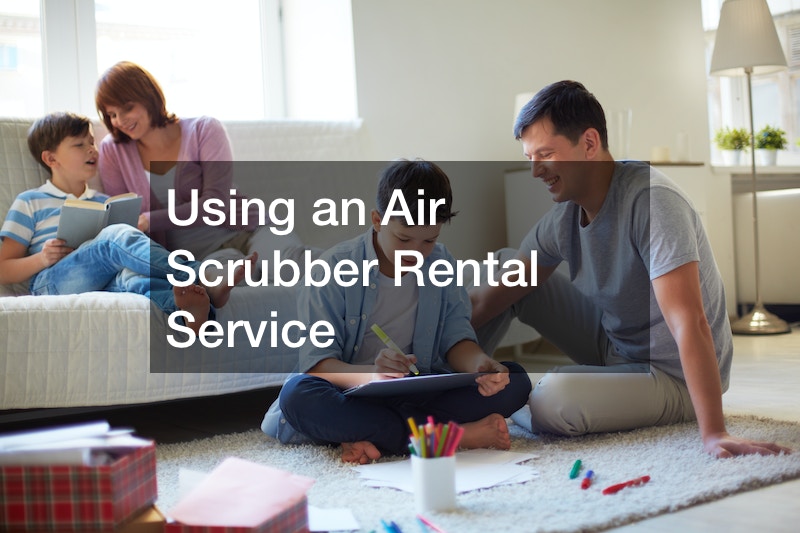
If you’ve recently bought a new home, it’s understandable that you want your new home to be safe before you move in. There will be many home projects you will realize must be done after you move in. However, some projects should be completed before you live there. Here are several projects that should be done before moving and some that can wait until you spend your first night there:
Assess the Status of Your New Home’s Roof
A new homeowner will want to ensure their new home is safe, so inspecting your roof before moving in your belongings is a good idea. By searching online for roofing companies, you can find a trustworthy company. You may wonder what roofers will do during an inspection. A reliable roofer will first climb a ladder to check for water stains or mold.
If the roofer sees a light brown stain on the roof, this is a telltale sign of a ceiling leak. A leak in the roof of your new home means more than some water dripping on your floor. A leak can signify structural damage to your home, resulting in severe damage. If the inspector sees mold damage, they will advise you to have a mold removal service before you move to lower the risk of respiratory disease from the mold.
During a roofing inspection, you will want the roofer to check for broken tiles. If the inspection finds broken tiles, they should be fixed before you move in. The fascia (the board along the edge of the roof, near the gutters) should also be checked. Fascial damage can cause pest invasion in your home and should be repaired before you call for your local movers.
Check if Your Chimney Needs Repairs

Your chimney is located on your roof, but it can cause additional problems for your entire home. Before you call your local movers, contact a certified chimney sweep to inspect the chimney. Inspecting the chimney is a matter of safety, so it should be a priority. A chimney inspection begins with the outer structure of the chimney. All the working components will be examined to see if they work.
If any of the major components aren’t working, it will be essential for you to contact a local chimney repair expert before you move there. You don’t want an issue with your chimney to endanger your family. Chimney inspections are typically offered (and priced) on three levels. Level One inspections provide the least intensive chimney inspection, which examines accessible chimney parts.
The second level of inspection will include checking the attic, crawlspace, and the flue for issues. A camera will be utilized to visualize the flue. Level two inspections are often required before a home sale, so you may not need one before you move. Ask the seller of the home whether the chimney was recently inspected.
Update the Fireplace
Your new fireplace is attached to the chimney, and its ability to work matters for the same reasons. A problem with the fireplace can put your family at risk. Before living in your new home, you should check the firebox (the fireplace interior) for cracks or gaps in the firebox lining. If you see any of the steel underneath the firebox lining, it will be vital to contact one of the fireplace companies in your area so they can repair the firebox.
Visible smoke stains are a sign that the fireplace isn’t working properly. Sometimes, in older homes, the hearth can settle. When that happens, you’ll see smoke stains on the ceiling of the firebox. Smoke signs there would signify that smoke had escaped between the hearth and the firebox.
If you see smoke stains above the front part of the fireplace, they could signify that the flue may be the problem. (A flue is a lever that allows air in and out of the fireplace.) If the flue lever is damaged or immovable, it can mean that smoke can leak from the fireplace. If you see any of these problems, you should allow a fireplace repair technician to do any needed repairs before calling.
Install New Flooring

If your pre-sale view of the new house left you planning to replace the existing floors, it makes sense to do that before you call your local movers. Once the seller vacates the home, the floors will be cleared of furniture and accessories. Clearing the flooring will allow the flooring installation company to do its job. However, if you move in before installing the floor, the furniture must be moved frequently.
If you install new flooring, you can choose the floor style. When choosing a flooring type, you should consider your family’s lifestyle. If you have an active family running in and out of the home, you’ll need a durable floor that is easy to clean.
You may want to change flooring due to style preference. Budget is often a significant consideration when choosing a type of flooring. You might select sheet vinyl or vinyl tile if you want inexpensive but durable flooring. According to Forbes, sheet vinyl costs 50 cents to $4.50 per square foot.
Look Into New Windows
When you plan to move into a new home, you may prefer calling a window installer to install a different type of window. According to Wells Custom Frames, windows are typically installed in new home construction after the framework has been completed. If you are moving into a previously occupied home or want to replace new windows because you want eco-friendly ones, it’s better to do so before moving in.
Eco-friendly windows reduce your family’s carbon footprint and save you money on heat and cooling costs over the years. According to Pella Branch, traditional windows can lose 15-22% of their heat. If you choose dual-pane windows, you can control the use of that retained heat. Those better-quality windows will also keep you from feeling air leaks or drafts.
Choosing a different window type before you call your local movers might also be a color choice. You might be drawn to the latest trend of black windows or opt for wooden frames. You can indulge your artistic side and opt for faux stained-glass windows.
Investigate the HVAC System

Before you move, you’ll want to ensure that your HVAC system can adequately heat or cool your home. If the HVAC system is running, listen to the sounds it makes to check for unexpected sounds. During the tour, you can ask that the heater and air conditioner be turned on, so you can be certain it is working.
Air filters are one of the easiest things to check during your home tour. If you’re now at the stage where you’ve had your bid accepted for a house, you should be sure of the condition of your HVAC services before you call your local movers to go to your new home. An HVAC contractor will help you to be sure of its status.
During an HVAC inspection, the inspector will check the system’s voltage and assess each appliance component. As the inspector checks each part, they will lubricate all the moving parts. After that, the filters and the condenser drain will be evaluated.
Ensure That the Septic System Works Well
A working septic system will be a necessity in your new home. If you’ve purchased a newly constructed home, it is expected that a septic tank installation will be completed. If your new home was previously lived in, it is wise to have a septic system inspection before you call your local movers. An inspection will let you know any problems with your septic system can be resolved before you move into the new house.
Septic system inspections typically check three different elements of the system: the septic tank, the distribution box, and the leach field. The leach field is an underwater system of pipes that helps the wastewater drain properly from the home. To begin, the inspector will first find and check the septic tank.
Flushing the toilet and opening the toilet tank can help the inspector determine whether the septic tank works appropriately. The distribution box is a system component that ensures waste and water are evenly distributed before they go into the leach field drain. The inspector checks the leach field by ensuring that wastewater flows properly through the system.
Hire Your Movers

Having checked the significant systems in the home, you will be moving into; you will now have progressed to the stage where you are ready to call your local movers. If you have friends or family members who have recently moved, you can ask them for a recommendation for which local movers they can recommend. You might also do an internet search to find some good suggestions. Be sure any mover that you choose is licensed and insured.
You can check a moving company’s reputation with the Better Business Bureau. If a company is BBB-accredited, it is a good sign. According to Moving, once you begin asking for bids, you should use the ‘rule of threes,’ which means you should not decide on a mover until you have received three bids. During the bidding process, a potential mover should not ask for money upfront (before the job is done).
A moving company should give you a written estimate for your moving job. You should wait to pay a large deposit before the move occurs to avoid being scammed. You should also never sign a blank moving contract. You should be aware that when you move, you have up to 90 days to report any problems with the service.
Speak About Upgrading Your Concrete
Several areas around your home utilize concrete. If your new home has a patio, it is often made of concrete. Sidewalks or paths in the backyard are also typically made from concrete. You can ask one of the local concrete contractors to replace any broken concrete areas.
Concrete contractors are trained to work with concrete at every stage. Contractors work with concrete from its first semisolid state to a hardened concrete surface. If any concrete areas around your home are cracked or broken, you can wait until you have moved into the house to replace them. Although improving their appearance may be necessary, their replacement can occur after your local movers have transported your belongings to your new address.
One of concrete’s positive attributes is that it can be fashioned into intricate designs and custom shakes by a professional concrete contractor. While past concrete projects required contractors to mix the concrete, it can now be premixed at ‘ready-mix’ plants. Therefore, an experienced concrete contractor will work with you to create concrete areas precisely as you want.
Power Wash After Moving
As soon as you move into your home, the feeling of belonging will begin to build. Soon after your local movers drop off your belongings, you can look at your new home proudly because it’s now yours. Part of your many new responsibilities as a homeowner will be to keep the exterior of your home looking good. One of the best ways to do that is to contact a local power washing service to power wash your home.
Power washing sprays hot, pressurized water onto the outer surface of a home. The pressure will remove dirt and mold from the outside of a home. At the same time, the water from the spray will rinse off the removed dirt. In addition to cleaning the outside of a house, power washing can also be used to clean any concrete surfaces on your property.
According to Blue Wave Clean, you can power wash your home at any time of the year. However, experts recommend spring and fall as the best times of year to power wash. One of the advantages of power washing is that it removes mold from your home, preventing it from causing respiratory disease in your family. Another advantage is its ability to remove dirt and grime, which can cause deterioration of the exterior if it isn’t removed.
Your new home will bring you many happy years. By taking care of the required maintenance tasks that will keep your home safe, you will be able to relax and enjoy it. Here’s to many years of enjoyment in your new home.



